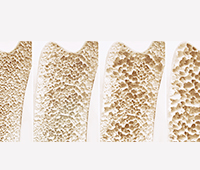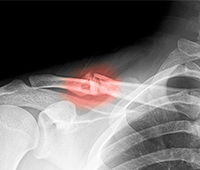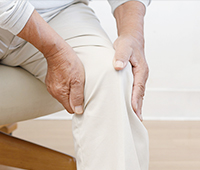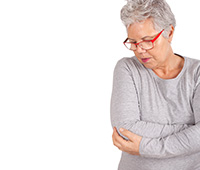WHAT IS Falls
- Definition
- Causes
- Symptoms
- Diagnosis
- Ayurvedic Tips
- FAQS
- References
Definition
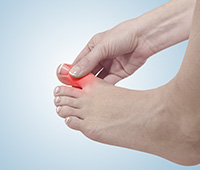
Our bodies are equipped to handle falls and ensure protective reflexes to avoid or minimize injury, as we age, this reflex goes down. Additionally, in older age, the ability of the body to sustain a fall goes down due to weaker muscles, ligaments and bones. Thus, a fall in older age can be quite serious.1
As per Ayurveda, falls come under the category of agantuj vyadhi (external disease) as most of the falls are due to accidents. Some conditions such as old age, poor eyesight and impaired brain functions can also cause falls.2
Disclaimer: The information on this page is not intended to be a substitute for professional medical advice. Do not use this information to diagnose or ayurvedic treatment of bone-diseases and/or falls without consulting the doctor. Consult your physician before beginning an exercise regime. "While we have products /ayurvedic medicines for bone-diseases and/or falls, you must consult an authorized physician before taking any of the products. For more information on products, visit www.dabur.com or call 1800-103-1644"
Causes
Causes OF Falls
A fall can occur due to many reasons, ranging from poor self-balance or carelessness to systemic conditions. Some causes include:1
- Increasing age leading to weakness
- Diabetes or Heart Disease
- Problems with blood circulation leading to dizziness
- Vision problems causing accidents
- Alcohol influence.
Disclaimer: The information on this page is not intended to be a substitute for professional medical advice. Do not use this information to diagnose or ayurvedic treatment of bone-diseases and/or falls without consulting the doctor. Consult your physician before beginning an exercise regime. "While we have products /ayurvedic medicines for bone-diseases and/or falls, you must consult an authorized physician before taking any of the products. For more information on products, visit www.dabur.com or call 1800-103-1644"
Symptoms
Symptoms OF Falls
A fall is a visible activity. Many may suffer from a fracture or dislocation of the bone due to a fall, especially of the hip. Additionally falls may cause injury, wound and head injuries leading to severe conditions like memory loss and paralysis.1
Disclaimer: The information on this page is not intended to be a substitute for professional medical advice. Do not use this information to diagnose or ayurvedic treatment of bone-diseases and/or falls without consulting the doctor. Consult your physician before beginning an exercise regime. "While we have products /ayurvedic medicines for bone-diseases and/or falls, you must consult an authorized physician before taking any of the products. For more information on products, visit www.dabur.com or call 1800-103-1644"
Diagnosis
Diagnosis OF Falls
Your doctor will initially check for your balance first and then access your risk factors based on your medical history and physical examination. He may also order for some blood or urine tests to check for infections or electrolyte imbalance. Some other tests include:1,3
- ‘Get up and Go’ Test – To check your general balance, your doctor will ask you to get up, walk, turn and sit down again, or may be reach for something, or pick up something from the floor
- Bone densitometry – To check your bone strength
- Heart test – such as echocardiography to test your heart function
- CT scan and X-Ray – to test your brain activity in case there is a head injury or nerve problems
- Eye tests – to rule out vision problems causing falls due to poor perception of way or obstacles
Disclaimer: The information on this page is not intended to be a substitute for professional medical advice. Do not use this information to diagnose or ayurvedic treatment of bone-diseases and/or falls without consulting the doctor. Consult your physician before beginning an exercise regime. "While we have products /ayurvedic medicines for bone-diseases and/or falls, you must consult an authorized physician before taking any of the products. For more information on products, visit www.dabur.com or call 1800-103-1644"
Ayurvedic Tips
Ayurvedic Tips Falls
Your doctor will initially check for your balance first and then access your risk factors based on your medical history and physical examination. He may also order for some blood or urine tests to check for infections or electrolyte imbalance. Some other tests include:1,3
- ‘Get up and Go’ Test – To check your general balance, your doctor will ask you to get up, walk, turn and sit down again, or may be reach for something, or pick up something from the floor
- Bone densitometry – To check your bone strength
- Heart test – such as echocardiography to test your heart function
- CT scan and X-Ray – to test your brain activity in case there is a head injury or nerve problems
- Eye tests – to rule out vision problems causing falls due to poor perception of way or obstacles
Diet Recommendations (Aahar)
Lifestyle changes (Vihar)
Disclaimer: The information on this page is not intended to be a substitute for professional medical advice. Do not use this information to diagnose or ayurvedic treatment of bone-diseases and/or falls without consulting the doctor. Consult your physician before beginning an exercise regime. "While we have products /ayurvedic medicines for bone-diseases and/or falls, you must consult an authorized physician before taking any of the products. For more information on products, visit www.dabur.com or call 1800-103-1644"
FAQS
FAQS
1.What is Osteoarthritis? How is it caused?
Osteoarthritis refers to a type of bone and joint problem in which a person suffering from it will have pains in joints. This happens due to the wearing down of the protective cartilage on the bones due to age or other factors. While any joint in the body can have osteoarthritis, usually it happens commonly in the joints of knees, hips, spinal column and hands.
Osteoarthritis is caused due to damage of the cartilages of the ends of the bones. This damage generally occurs due to multiple factors primarily being increasing age. Apart for age, the other factors that cause the damage to cartilage are Obesity, female gender and trauma to the joint.
2.What is Rheumatoid arthritis? How is it different from osteoarthritis?
Rheumatoid arthritis (RA) refers to an auto immune disorder where the body’s defense systems turn against the body and mainly affect the joints but may also severely affect the eyes, skin, lungs, heart and blood vessels. It generally manifests as pain in the joints along with swelling and difficulty in movements.
Unlike osteoarthritis which affects the weight bearing joints, RA affects any and most joints of the body. It generally presents with swelling (hot swollen joints) as a cardinal feature and also shows some systemic manifestations (such as affects the eyes, skin, lungs, heart etc) unlike OA.
3.What is osteoporosis? How is it recognized?
Osteoporosis refers to the condition where the bone becomes weak. Instead of the strong tissue that support the body structure, bones become brittle from inside and are capable of breaking with a minor jerk or fall. This leads to fractures in the hands, hips and legs with minor falls or injuries.
It can be recognized based on specific signs and symptoms and a BMD test. Symptoms are as follows -
- Easily having a bone fracture
- Pain in the back
- Height becomes lesser than usual
- A dropping posture
4.What first aid should I offer to a person with a fracture?
If you witness a person developing fracture, take these actions immediately -
- Urgently call for medical help or arrange for an ambulance
- Stop any bleeding if there is an open wound. This can be done by applying pressure with a clean cloth or tight bandaging.
- Avoid moving the injured area.
- Apply ice packs to the injured part
- If the person faints of is short of breath, put their head at a lower side and legs at a higher angle
5.How does one know if a child has rickets?
The signs and symptoms of rickets are as follows –
- Crooked or bow shaped legs
- Thick joints of hands and feet
- Protruded chest bone
- A delay in growth milestones
- Muscular weakness
6.How does one have a dislocated joint?
Dislocations are usually caused due to a trauma or as a sports injury. Falls associated with contact sports such as football, basketball etc can lead to a dislocation.
Additionally, a fall on the outstretched hand and trauma due to a motor accident, too can cause dislocation.
7.What is a Tennis elbow? How is it caused?
Tennis elbow refers to the pain in elbow due to swelling of the tendons which may occur due to repetitive movements of the wrists. Unlike the name suggests, the condition affects non-athletes as well.
It is caused due to overuse of the tendons resulting in a muscle strain injury. Any activity that requires repeated motions of the elbow and wrists can cause tiny injuries in the tendons leading to tennis elbow.
8.What is frozen shoulder and how is it caused?
Frozen shoulder refers to a condition where the shoulder seems to be frozen in its movements. This condition cause pain and stiffness in the shoulder and restricts any kinds of movements. Medically, this condition in also known as adhesive capsulitis.
While the exact cause of frozen shoulder is not understood, it is believed to be caused due to a swelling of the joints covering called as capsule. This may happen due to long periods of immobility or trauma to the underlying nerve.
9.How does a hip get fractured?
Generally hip fractures can be caused because of a trauma due to accident, falls, injuries or rarely violence. Hip fracture is very common in the elderly as it often happens due to a fall from height or sometimes even with twisting of the foot in people with weak bones. Younger people often have hip fracture as an outcome of a motor vehicle accident.
10.What is meant by slipped disc?
A slipped disc refers to the swelling in the cushion between two bones, most commonly the vertebra (individual bones of the spine). This cushion is supposed to provide mobility and flexibility to the spine. This cushion between the vertebra is called as a disc and is filed with a gel like substance that provides the flexibility.
Slipped disc is the swelling of this disc which causes pain and obstructs mobility of the spine. A swelling in the cushion leads to some of the gel in the disc to protrude out between the bones.
Disclaimer: The information on this page is not intended to be a substitute for professional medical advice. Do not use this information to diagnose or ayurvedic treatment of bone-diseases and/or falls without consulting the doctor. Consult your physician before beginning an exercise regime. "While we have products /ayurvedic medicines for bone-diseases and/or falls, you must consult an authorized physician before taking any of the products. For more information on products, visit www.dabur.com or call 1800-103-1644"
References
References
- Medline Plus. Falls. Available at https://medlineplus.gov/falls.html accessed Sept 20th 2016
- Singh RH. The Contemporary strength of Ayurvedic Geriatrics. Ann Ayur Med. 2012; 1(1-2): 22-30.
- Falls Prevention: Diagnosis & Tests. Aging & Health A to Z. HealthinAging.org. Available at http://www.healthinaging.org/aging-and-health-a-to-z/topic:falls/info:diagnosis-and-tests/ accessed Sept 21st 2016
- Falls and Fractures. Age Page. National Institute on Ageing. Available at https://www.nia.nih.gov/health/publication/falls-and-fractures accessed Sept 21st 2016
- Swami Sadashiva Tirtha. The Ayurveda Encyclopaedia: Natural secrets to healing, prevention and longetivity. 2005
Disclaimer: The information on this page is not intended to be a substitute for professional medical advice. Do not use this information to diagnose or ayurvedic treatment of bone-diseases and/or falls without consulting the doctor. Consult your physician before beginning an exercise regime. "While we have products /ayurvedic medicines for bone-diseases and/or falls, you must consult an authorized physician before taking any of the products. For more information on products, visit www.dabur.com or call 1800-103-1644"
Know more on Bone Diseases
